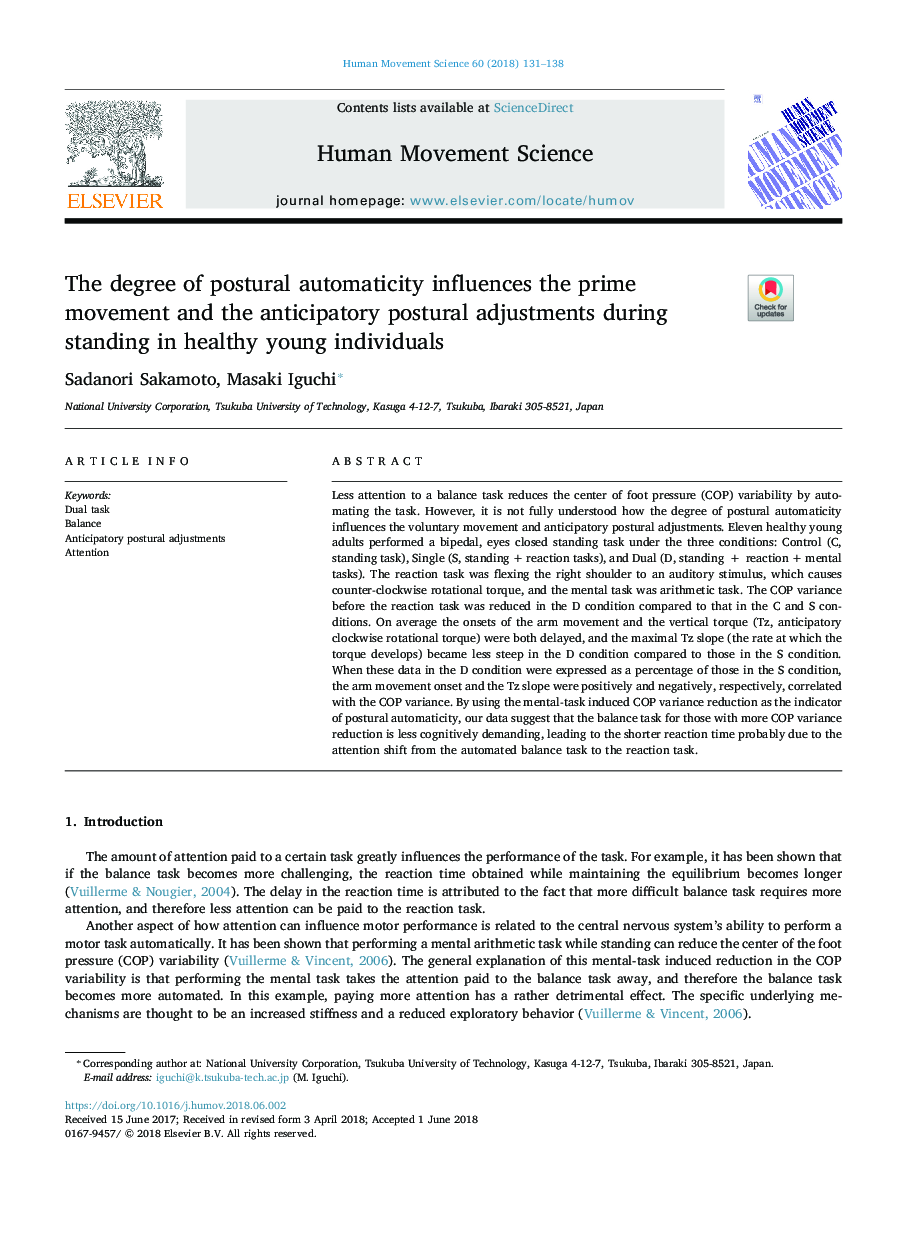| Article ID | Journal | Published Year | Pages | File Type |
|---|---|---|---|---|
| 7290869 | Human Movement Science | 2018 | 8 Pages |
Abstract
Less attention to a balance task reduces the center of foot pressure (COP) variability by automating the task. However, it is not fully understood how the degree of postural automaticity influences the voluntary movement and anticipatory postural adjustments. Eleven healthy young adults performed a bipedal, eyes closed standing task under the three conditions: Control (C, standing task), Single (S, standingâ¯+â¯reaction tasks), and Dual (D, standingâ¯â¯+â¯â¯reactionâ¯+â¯mental tasks). The reaction task was flexing the right shoulder to an auditory stimulus, which causes counter-clockwise rotational torque, and the mental task was arithmetic task. The COP variance before the reaction task was reduced in the D condition compared to that in the C and S conditions. On average the onsets of the arm movement and the vertical torque (Tz, anticipatory clockwise rotational torque) were both delayed, and the maximal Tz slope (the rate at which the torque develops) became less steep in the D condition compared to those in the S condition. When these data in the D condition were expressed as a percentage of those in the S condition, the arm movement onset and the Tz slope were positively and negatively, respectively, correlated with the COP variance. By using the mental-task induced COP variance reduction as the indicator of postural automaticity, our data suggest that the balance task for those with more COP variance reduction is less cognitively demanding, leading to the shorter reaction time probably due to the attention shift from the automated balance task to the reaction task.
Related Topics
Life Sciences
Neuroscience
Cognitive Neuroscience
Authors
Sadanori Sakamoto, Masaki Iguchi,
